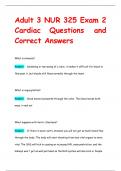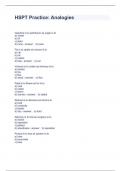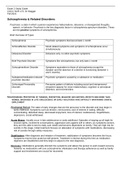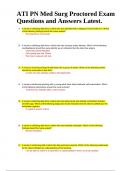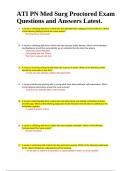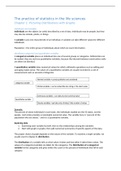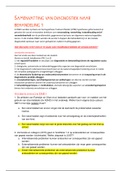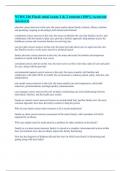Exam (elaborations)
Adult 3 NUR 325 Exam 2 Cardiac Questions and Correct Answers
- Course
- Institution
What is stenosis? Answer- hardening or narrowing of a valve, it makes it difficult for blood to flow past it, but bloods still flows normally through the heart What is regurgitation? Answer- blood moves backwards through the valve. The blood moves both ways, in and out What happens with Aor...
[Show more]
